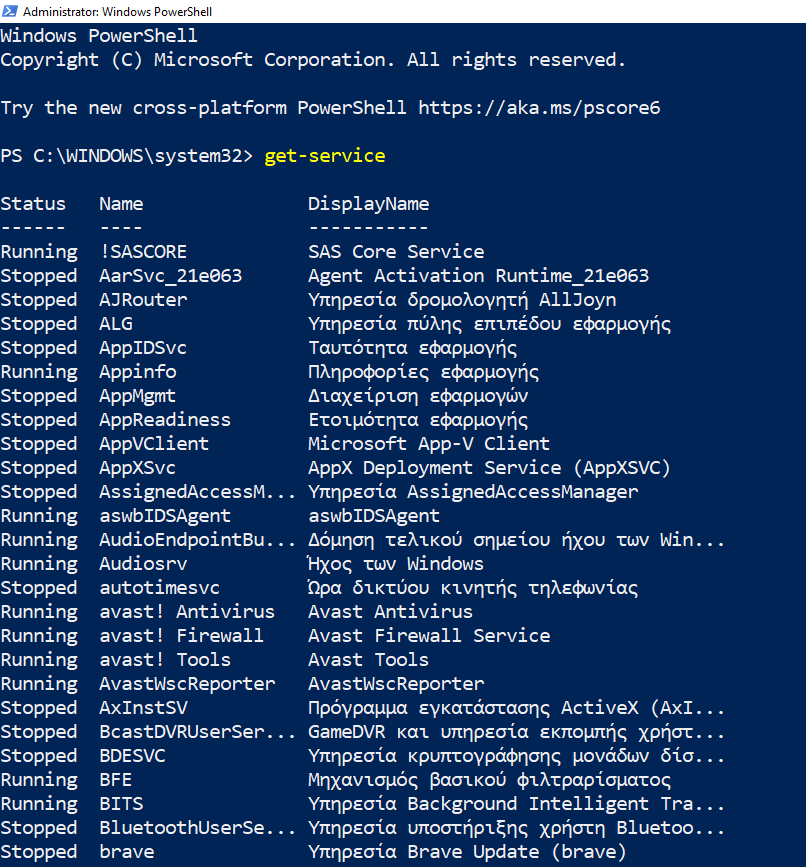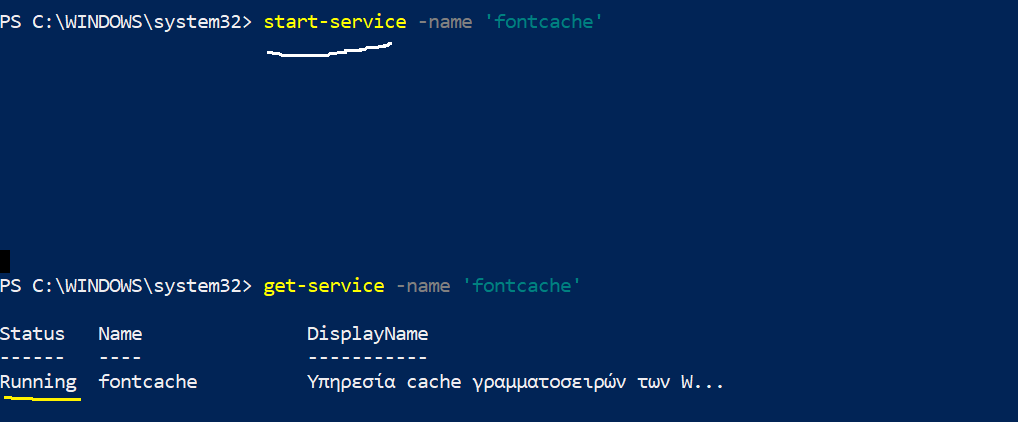We have already talked about the get-service cmdlet in the previous post. Now let’s talked about two other similar cmdlets.
First, lets use the cmdlet get-service to check our services.

We can manipulate these services with the right cmdlets.
We use the DisplayName property to isolate the service we are interested with. Let’s say this service is the fontcache service.

We see that this service is running!
Stopping a service
What about stopping it?
Could we achieve that with a cmdlet?
Yes! There is the stop-service cmdlet, that is suitable for this job.
Let’s see if we can stop it.

We notice that we still need to use the get-service cmdlet in order to check the status of the service.
Get-service does exactly that, display a service to powershell, while stop-service is stopping it behind the scenes without displaying it.
NOTE: In order to save typing you can use the Tab + arrowUp/arrowDown shortcut that enables us to get past cmdlets showing.
Starting a service
There is cmdlet for that.
It’s easy to guess. We just type start-service and we are good.

Here we also need the get-service cmdlet in order to display what’s going on.
The start-service cmdlet can only start the service, not display it.
This is consistent with the basic principle of all Cmdlets. Do one specific thing only.